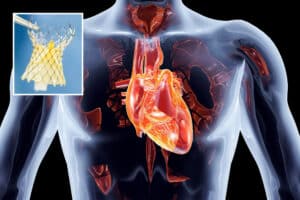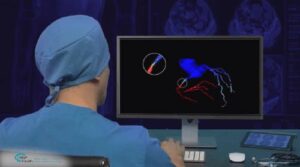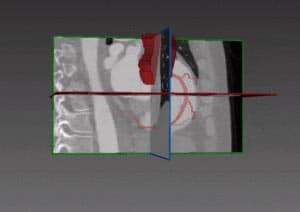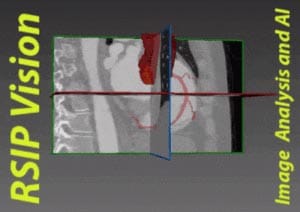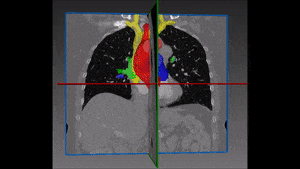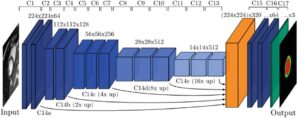Using CT angiography, cardiologists can gain visual input regarding the state of the vascular tree and capillaries, as well as estimates of the myocardial tissue conditions. In case of abnormal narrowing of vasculature (stenosis), x ray and CT angiography enable physicians to spot the narrow region and devise an intervention plan, such as stent placement. Veins and capillaries can be viewed instantaneously by injecting radio-opaque contrasting agent to the patient’s blood during angiography. The contrast agent is injected through a catheter placed in-situ and images are acquired at about 2-3 frames per second.On the basis vascular-contrasted images, two or more images of various angles can be used from triangulation and the reconstruction of a depth map. The depth map can be used as a basis for a full reconstruction of the artery tree to be visualized. The reconstructed 3D model allows physicians to localize stenosis and other vascular abnormalities while sparing cardiology patients the additional radiation exposure from repeated X-ray imaging.
Algorithmic 3D reconstruction of the heart
RSIP Vision has built a vascular reconstruction algorithm for the vascular tree. Using minimal 2D images from a routine angiography, RSIP Vision’s algorithm tracks the veins and constructs a route map of the arteries, from two different angles. Depth maps are computed and the 3D structure of the vascular tree is generated to create a detailed 3D reconstruction of the heart. Measurements are calculated from the 3D reconstruction, enabling even more accuracy when measuring the vein section and the narrowness severity.
The sophisticated algorithms in our image processing technology allow our client to successfully reconstruct 3D models of the heart from 2D images, providing improved diagnostic capabilities. This generates increased therapy effectiveness and reduced costs as well as risks to patients and physicians.
RSIP Vision has built medical imaging software for more than two decades. Contact us and you will see our care and passion in writing the algorithms that help you meet your 3D reconstruction of the heart and other R&D consulting needs.

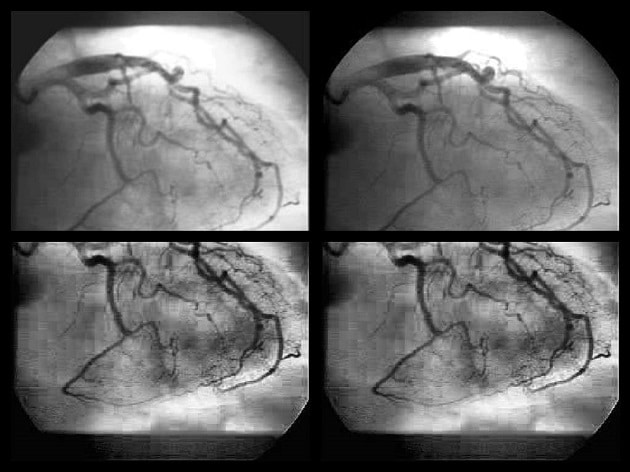
 Cardiology
Cardiology